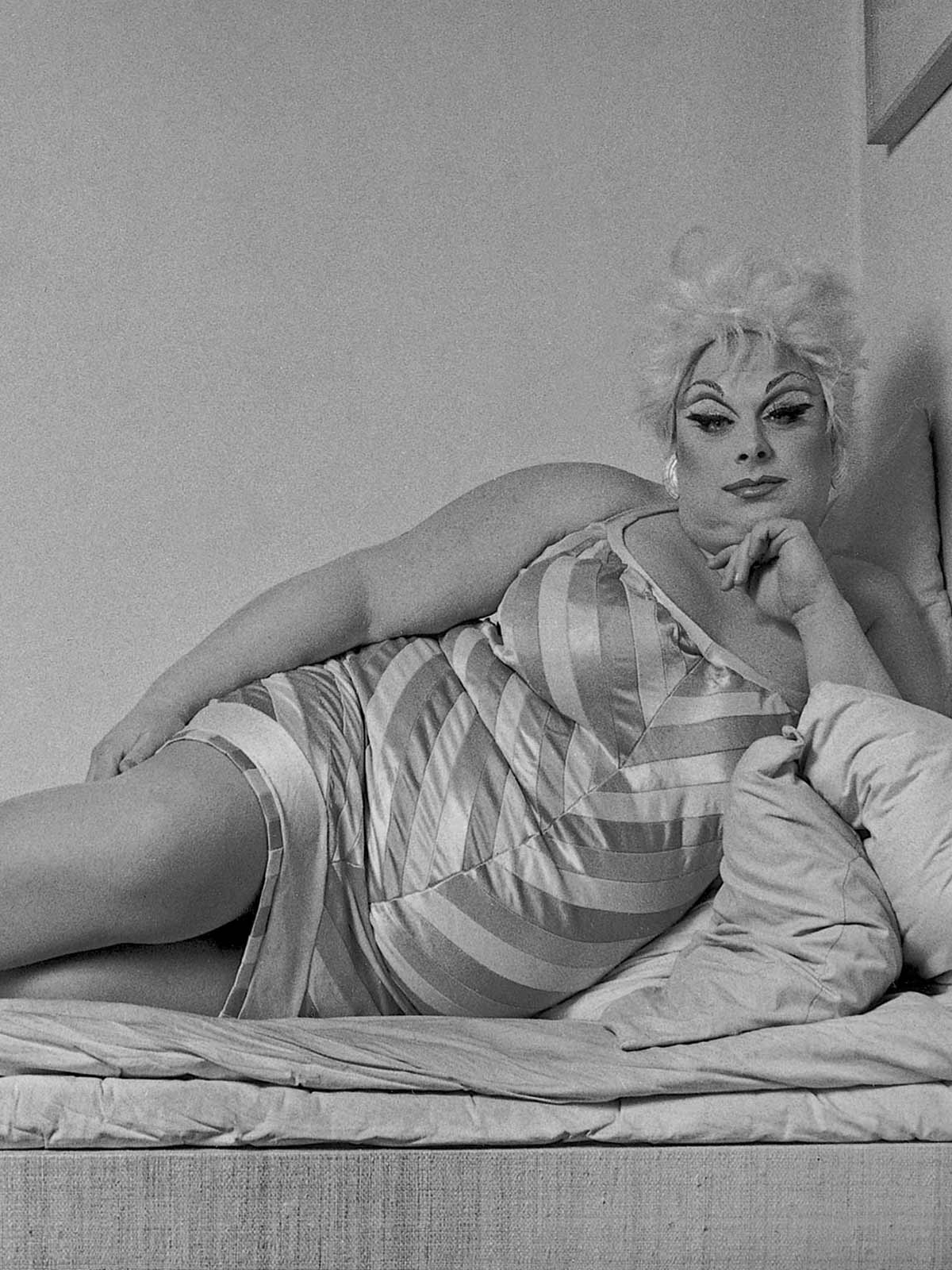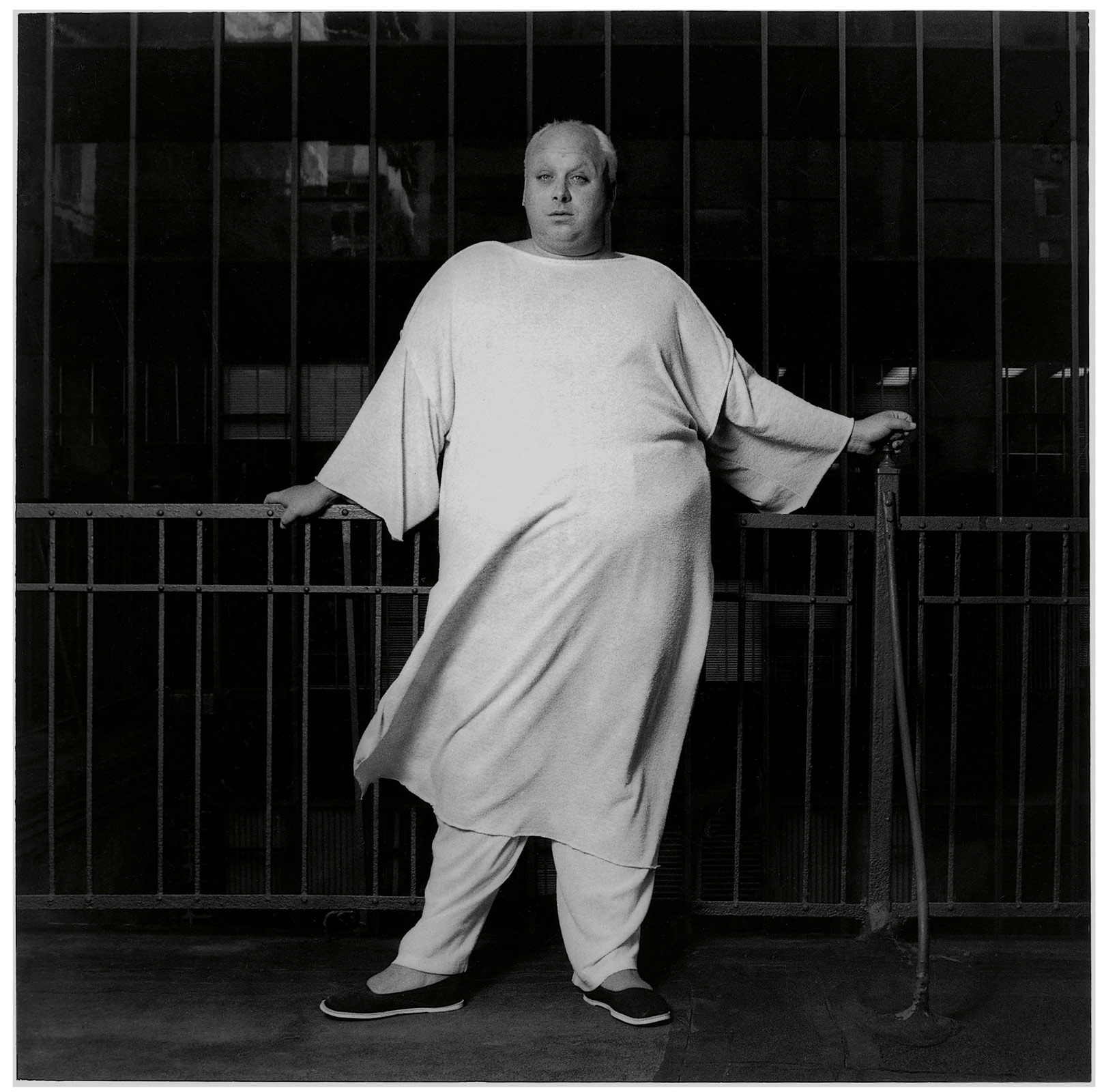"I didn’t realize I was archiving an era that was going to be extinct; I was just photographing my friends.”
Hailing from Montreal, photographer Marcus Leatherdale remembers paging through Interview magazine and coming upon a photograph that spoke to his soul. “The picture of Edwige with blonde hair sitting on a couch was the epitome of where and what I wanted to be and do in New York,” he says.
In spring 1978, Leatherdale, then 25 years old, finally arrived in New York after completing his photographic training at the San Francisco Art Institute. Though SFAI didn’t focus on studio photography at the time, the young punk was determined to pursue his dream, beginning his practice by placing people in front of walls to simulate a controlled environment.
“I didn’t realize I was archiving an era that was going to be extinct; I was just photographing my friends,” Leatherdale says, reflecting on the release of his magnificent monograph, Out of the Shadows—Marcus Leatherdale: Photographs New York City 1980-1992. Leatherdale’s timeless black and white portraits of icons including Robert Mapplethorpe, Andy Warhol, Madonna, Iman, Suzanne Bartsch, Debbie Harry, Joey Arias, and Kathy Acker offer an elegiac epitaph to Downtown at its height.
“The late ‘70s to early ‘80s was my favorite time in New York. I was in the right place at the right time and I don’t think I have felt that way since. It didn’t matter if I was broke; I felt this was meant to be,” Leatherdale says. “I met everyone through Robert Mapplethorpe, Marcia Resnick, and Larissa—and going out to Studio 54 at least twice a week until Mudd Club opened. I was the new kid in town and I had a New York City guardian angel.”
Although he was very green, Leatherdale learned fast and quickly became an integral fixture on the scene at a time when the worlds of art and nightlife blended and blurred. “The first show I ever had was at Danceteria in 1980. No one did that then and I was told not to do it—but no one else wanted to show me so I did it. Keith Haring was doing odd jobs at the club and hung my show,” Leatherdale notes.
“Clubs like Area, the Pyramid, Mudd Club—those were real clubs. There was camaraderie. Back in those days, money was not an issue. You weren’t that poor and rent was a three-digit figure. You didn’t need blood money. You had the presence of being you, of being interesting, and that was enough.”
Leatherdale’s groundbreaking “Hidden Identities” series for the original Details magazine began one night at The Underground nightclub during a Dada-inspired event in 1983. “I took over the go-go cage and started photographing unidentifiable portraits. It was like a photo booth and everyone lined up for it,” Leatherdale says. “Back then you didn’t see portraits of famous people hiding themselves in front of the camera. The idea was that your personal style was enough to be recognizable. You didn’t need to see the face of a person to know who they were.”
On the business front, Leatherdale got his start working as Mapplethorpe’s studio manager during his early years in New York. “Robert was just learning himself when I met him. He was [living] hand to mouth on a lot of levels—not totally, because he had Sam Wagstaff backing him, but it wasn’t a smooth operation yet,” he says.
The job gave Leatherdale the experience he needed to launch a studio of his own at 281 Grand Street, just a couple blocks east of Bowery. Back then, the neighborhood was still reminiscent of Mae West’s New York, home to the flophouses, bars, and bums that made the Bowery notorious for over a century.
Leatherdale shared the loft with close friend Claudia Summers, who he met in San Francisco during the height of West Coast punk. “Marcus always called me his muse,” Summers writes in the introduction to Out of the Shadows. “But I believe we meditated on each other—our long and deep friendship forged through the years of what Emerson called the tough fiber of the heart.”
Beneath the breathtaking beauty of his subjects lies the brutal truth: the scourge of AIDS taking the lives of an entire generation. Leatherdale’s sitters—including Leigh Bowery, Cookie Mueller, Tina Chow, Jean-Louis Morin, and Mapplethorpe—are just a handful of the 194,476 people who died from AIDS in the United States during the time when these photographs were made.
“I had been avoiding all this in a way,” Leatherdale says. “These photographs have been in my closet for a long time. I dusted everything off and brought it out kicking. It was a sad past. It’s bittersweet. Many of the people in the portraits are gone. You can’t go back. You build up such an armor and resistance to it.”
Included in the book are a pair of portraits of Stephen Reichard placed side by side: one made in 1982, the other in 1986. “Stephen was one of the chicest, most sophisticated, intelligent men and he turned into Gollum in five years. They were giving him an experimental medicine that was making him nuts. I would be in ambulances in the middle of the night getting him to and from the hospital, and he would be a madman going out of his mind,” Leatherdale says.
“See how incredible he was and what AIDS can do to you? He crawled up the stairs and it took him half an hour because he wouldn’t have any help. He said that he wanted to do a portrait of the dead. He said, ‘I look like an Egon Schiele character.’ He knew my [1982 self-portrait] Homage to Schiele, one of my favorite painters; that’s why we photographed him that way. He died within a month.”
Out of the Shadows is a poignant reminder that the over-the-top glitz and glamour of the ‘80s was in many ways a smokescreen for a shadow casting a pall upon the earth, a last hurrah akin to Weimar-era Berlin. “The amount of memorials I went to at that time is not to be repeated. I felt like the only man standing. That happens a lot when I look at photographs,” Leatherdale reveals.
In her essay, Summers sums it up: “Photographs are by essence memento Mori; the camera’s eye shutters on a moment already gone before the breath exhales, a moment already dead. I now look at the photographs of what is past; in the present moment the boundaries of the image blur into memories.”



























